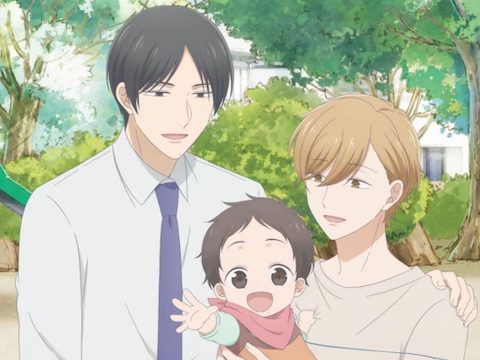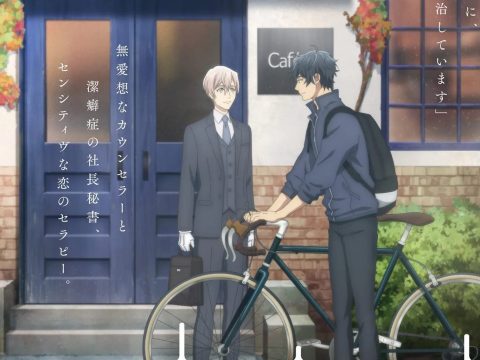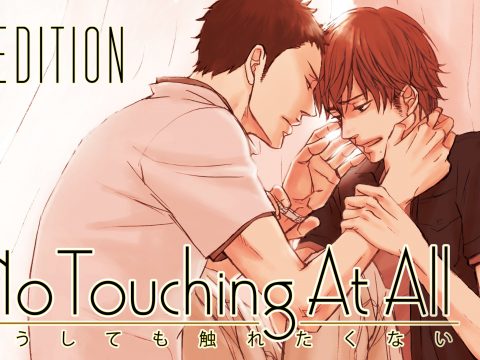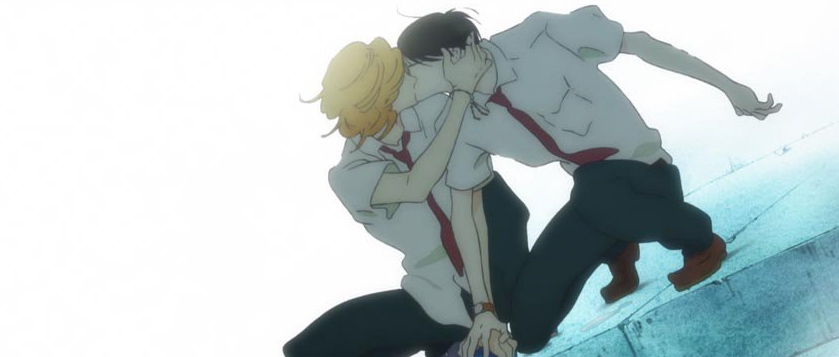
As popular as the boys’ love genre is, BL stories don’t often get the big-screen treatment.
But this past weekend saw the Japanese release of the A-1 Pictures-produced Dōkyūsei (Classmates), an anime film based on the manga by Asumiko Nakamura and directed by first-timer Shoko Nakamura (no relation, we presume).
Dōkyūsei’s story should sound pretty familiar to anyone familiar with the genre. Sajo and Kusakabe are two classmates at an all-boys high school in Tokyo. One day during choir practice, Kusakabe, an outgoing, chain-smoking rock guitarist, notices the bespectacled bookworm Sajo is only pretending to sing. But after school, Kusakabe catches Sajo alone practicing – it turns out Sajo is more dedicated to class than Kusakabe assumed – he just can’t see the score because of his poor eyesight.
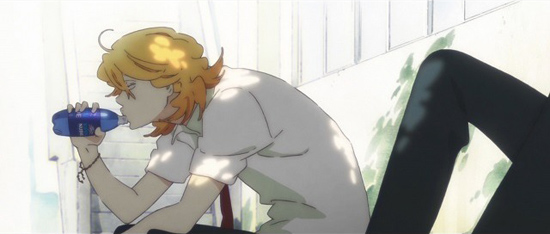
Under the pretext of perfecting the song before the school recital, Kusakabe and Sajo start to spend time together, until one fateful night when a water bottle is fumbled, hands touch, and you know the rest. From there, it’s an opposites-attract romance in which the two very different boys attempt to understand each others’ worlds while dealing with the pressures of their impending graduation.
It’s familiar territory, but Dōkyūsei’s originality lies not in its content but its presentation. Its backgrounds are lush, hand-painted watercolors, and its animation is loose, lanky and free. Dōkyūsei provides further proof (as if we really needed any) that high-quality sakuga animation isn’t just for action films, but can enhance down-to-earth human dramas too.
Dōkyūsei’s originality doesn’t stop at its visuals. The soundtrack, especially important for a film so centered around music, was written and performed by steel string guitarist Kotaro Oshio, whose simple solo soundtrack is far more effective than a fully-orchestrated one would have been.
Choosing Oshio was just one of many deft touches by first-time director Nakamura. Stories about high school romance, between boys or otherwise, can easily slip into overwrought melodrama. But Nakamura – without minimizing the very real feelings of sadness and joy felt by these two characters – keeps the film light, using humor to breeze by scenes that might’ve dragged other films into hopeless cliche.
And clocking in at about 60 minutes, breeze by Dōkyūsei does.
Yes, the average film length of around 90 to 120 minutes might be arbitrary, selected decades ago based on the weight of film canisters and how often theaters want to rotate butts out of seats, but we’ve nevertheless basically concluded that that’s how long a film should be.
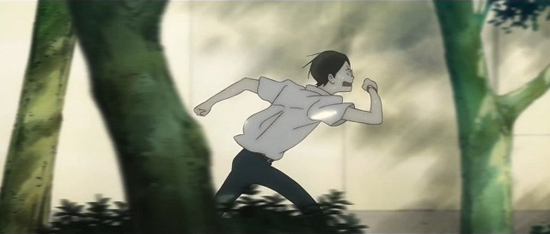
On the other hand, there are a large number of anime films that, for whatever reason, defy that logic and come in at about an hour. More often than not, this results in half-baked films with either too little or too much story to justify their runtime, or that force us to come back in a few months for part two.
Dōkyūsei, thankfully, doesn’t have this problem. For one thing, the film is broken into four sequences, each about 20 minutes each, each based around a season. In this way Dōkyūsei almost feels like a four-episode anime series rather than a single film.
Secondly, the Dōkyūsei’s runtime perfectly fits its ambition. In other words, it’s not a film out to change the world. It’s a simple love story that, thanks to some smart filmmaking choices by its debut director, feels short and sweet.
Or to return to the music theme, Dōkyūsei is an EP, not an album – but sometimes that’s all you need.
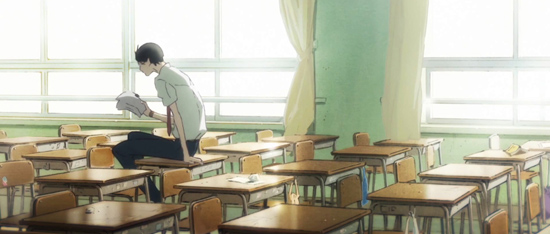
Matt Schley is Otaku USA’s man in Japan and e-News editor. His favorite Nakamura is Yakult Swallows catcher Yūhei Nakamura.




